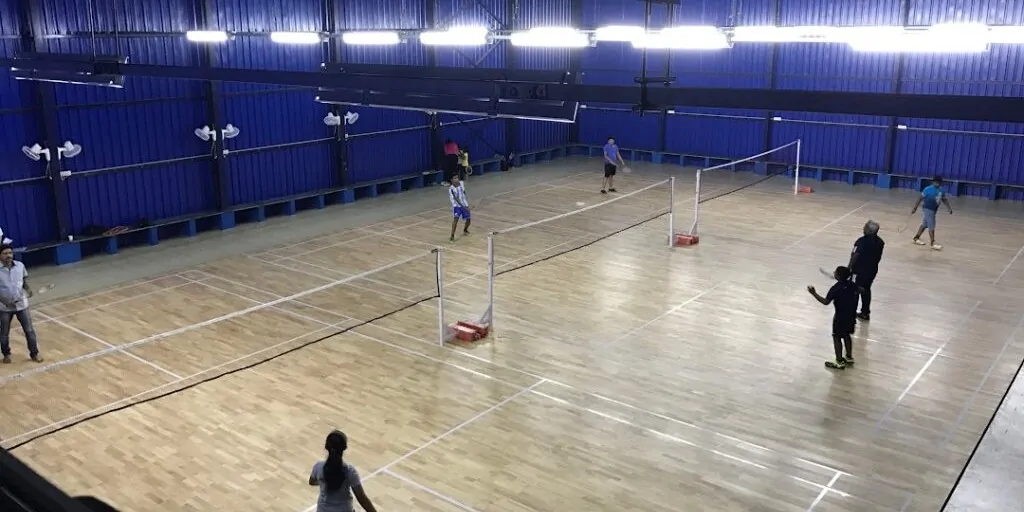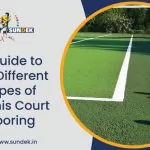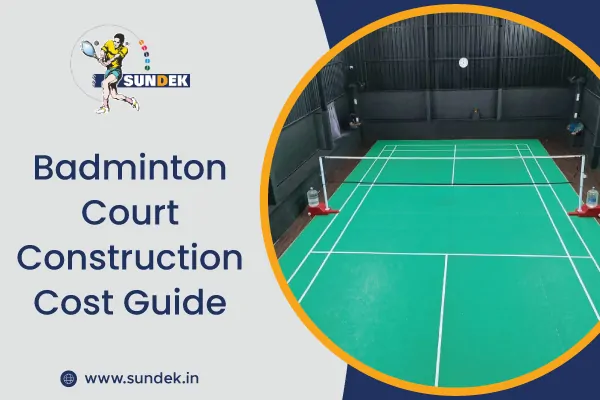Badminton, a popular and fast-growing sport worldwide, requires high-quality courts for players to practice, compete, and enjoy the game. As the sport grows in popularity, there is a high need for professional badminton courts. Constructing a badminton court, whether for a professional setup or recreational use, involves several factors that contribute to the overall cost. In this guide, we will break down the various elements that impact the cost of building a badminton court and provide you with insights on how to budget effectively for your project.
Factors Affecting Badminton Court Construction Cost
Location
The location of your badminton court plays a significant role in the overall cost. Urban areas generally have higher land acquisition costs compared to rural areas, especially when the property is easily accessible and centrally located. Additionally, urban areas often come with additional expenses like zoning fees, permits, and higher labor rates.
Size and Layout
The size of the court and whether you plan to build one or multiple courts will directly influence the cost. If you’re building multiple courts, the cost will be higher due to increased materials, labor, and land space. Furthermore, if you plan to add amenities such as seating areas, restrooms, or changing rooms, these additional features will also increase the overall cost of the project.
Materials
The materials used for the badminton court will affect the cost significantly. The type of surfacing chosen (wood, synthetic, or rubberized flooring) has a large influence on the budget. Additionally, the cost of nets, poles, lighting, fencing, and flooring finishes will vary depending on the quality of the materials chosen.
Labor Costs
Labor costs make up a large portion of the overall construction expense. Skilled workers who can construct the court to professional standards will charge higher rates. Additionally, the project timeline and the need for specialized construction workers for specific tasks (such as installing the flooring or lighting) will also affect the cost.

Breakdown of Costs
When budgeting for a badminton court construction project, it’s important to consider all potential expenses involved. Here’s a breakdown of the key cost components:
Land Acquisition
One of the most significant initial costs is acquiring land for the court. The price will depend on the location, whether you are purchasing or leasing the land, and its proximity to urban centers. In some cases, land preparation and clearing may also add to the expense.
Design and Planning
Professional design and planning are essential for ensuring your badminton court meets the required standards. Architectural fees, permit costs, and site surveys are common expenses during the planning phase. It’s important to account for these costs to ensure the project complies with local regulations and zoning laws.
Materials
Material costs will vary based on the quality of the surface and other components you select. High-quality wooden flooring or synthetic court materials will typically be more expensive. Additionally, nets, posts, lighting systems, and boundary markings all contribute to the cost.
Labor
Building a long-lasting, outstanding badminton court requires highly qualified workers. This includes contractors, specialists for flooring installation, electricians for lighting, and landscapers for any exterior work. Labor charges will vary based on the project’s sophistication and locality.
Additional Costs
After the court is constructed, additional costs may arise, including maintenance equipment, insurance, and any unforeseen issues that arise during the construction process. Preparing for these additional expenses will help you avoid unexpected unexpected costs.
Budgeting Tips and Cost-Saving Strategies
Research and Compare Quotes
It’s essential to obtain quotes from multiple contractors and suppliers to get the best price for your project. Comparing quotes allows you to choose the most cost-effective options without compromising on quality.
Consider Alternative Materials or Construction Methods
If your budget is tight, consider opting for alternative materials that provide good performance without a hefty price tag. Rubberized surfaces or modular tiles, for instance, are less expensive than typical timber floors.
Prioritize Essential Features
Focus on the most essential features needed for your badminton court. While additional amenities are nice, they should only be included if they fit within the budget. Opting for more basic amenities in the beginning allows you to focus on the court’s quality.
Plan for Long-Term Maintenance Costs
Maintenance is a continuous expenditure that should be included in your budget. While some surfaces, like wood, may require more frequent upkeep, other materials, like synthetic flooring, are easier to maintain and will save you money in the long run.
Why Choose Sundek Sports Private Limited?
Sundek Sports Private Limited is a leading badminton court flooring manufacturer in India, known for providing high-quality, durable, and cost-effective flooring solutions. With years of expertise, the company ensures that every court is designed to offer optimal performance. Whether you’re building a professional-grade badminton facility or a recreational court, Sundek Sports delivers tailored flooring options to meet your specific needs. Their commitment to excellent customer service, installation support, and long-lasting materials ensures the longevity and functionality of your court.
Renowned for its innovation and expertise in sports flooring technology, Sundek Sports is dedicated to offering badminton court flooring solutions that align with the unique requirements of each project. By choosing Sundek Sports, you’re not just investing in flooring; you’re investing in a high-quality court that will stand the test of time, offering superior performance for years to come. Contact Sundek Sports to elevate your badminton experience with the best flooring solutions available.
Conclusion
Building a badminton court involves careful consideration of several factors, including location, materials, labor, and long-term maintenance. By understanding the costs and planning accordingly, you can create a high-quality court that benefits players and enhances their performance. Remember to prioritize safety, durability, and functionality when selecting the flooring and additional features. Investing in quality materials and skilled labor will ensure that your badminton court serves you and your community for years to come.
Sundek Sports Private Limited can provide experienced support and excellent in quality badminton court flooring. Contact us now.
FAQ
What variables affect the cost of creating a badminton court?
The main criteria are location, court size, material selection (wood, synthetic, etc.), labor expenses, design needs, and extra benefits like lighting, seating, and storage.
How much does land acquisition affect badminton court construction costs?
Land purchase is one of the major expenses, as land values vary by area. Urban areas generally have higher land costs than rural areas, impacting the overall construction budget.
What is the average cost of constructing a badminton court?
The cost can range significantly, depending on size and materials. On average, constructing a high-quality badminton court can cost between ₹5-15 lakhs, including labor, materials, and other expenses.
Which materials are often used for badminton court flooring?
Common flooring materials include wood, synthetic rubber, vinyl, and rubberized tiles. Each material offers different durability, maintenance, and aesthetic benefits, affecting both the overall cost and performance of the court.
How do labor costs impact badminton court construction?
Labor expenses vary depending on the project’s complexity and skill level. Employing skilled individuals for certain activities, such as flooring installation and net construction, will raise labor costs and project length.
Is there any continuing maintenance expense for a badminton court?
Yes, ongoing maintenance includes cleaning, repairing worn areas, replacing damaged flooring, and ensuring the net and posts are properly maintained. Regular upkeep is essential for preserving the court’s quality and extending its lifespan.
Do I need professional designers for my badminton court?
Hiring a professional designer is recommended to ensure proper court layout, compliance with regulations, and optimization for performance. While it adds to the cost, it helps achieve a functional and efficient court.
What are the additional costs after constructing the court?
Additional costs include fencing, lighting installation, seating, and safety measures. These factors add to the initial expense but enhance the functionality and user experience of the court.
How does the location of the badminton court affect costs?
Location influences both land costs and installation expenses. Urban locations may incur higher fees for land and permits, while rural areas may have lower costs but could incur additional expenses for accessibility.
How do I save money when building a badminton court?
To save money, consider using cost-effective materials, limiting additional features, and get multiple quotes from contractors. Prioritize essential components while focusing on long-term durability and minimal maintenance to save in the future.






